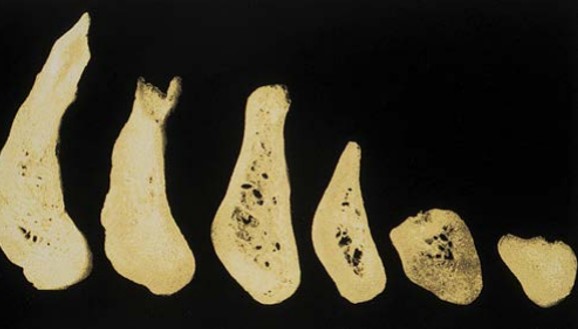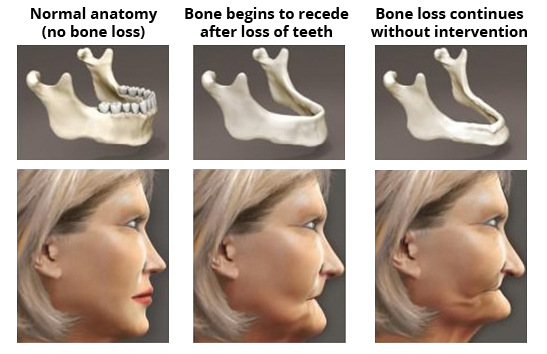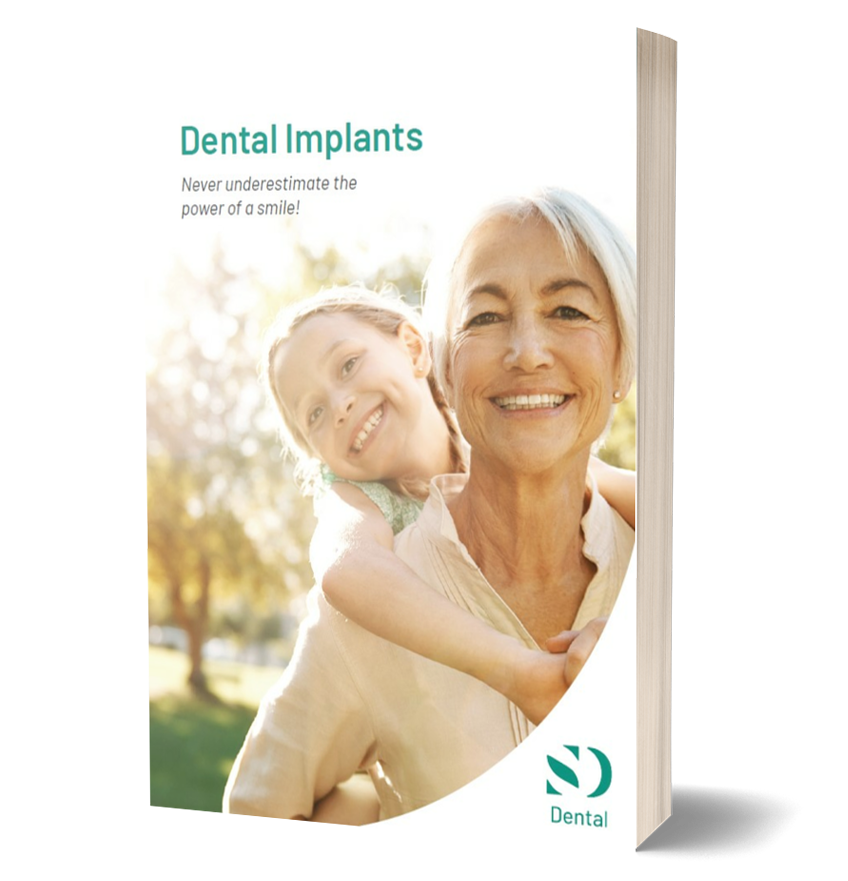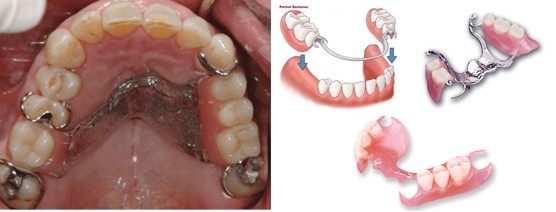About Missing Teeth
Edentulism (missing teeth) and its consequences

Wolf’s law (1892) states that bone remodels in relationship to the forces applied. This is concept behind astronauts requiring to exercise in space to maintain muscle mass as there is no gravity pull in space.
In our jaw, bone needs stimulation to maintain its form and density. Teeth normally transmit this force. When a tooth is lost, the lack of stimulation to the residual bone causes a decrease in bone density with a loss in external width and height of the bone volume. (Roberts WE, 1987).

Here we see 6 different stages of resorption in the anterior mandible (lower jaw). The left side represents the amount of bone volume when there are teeth still present. The far-right side depicts residual bone height after tooth loss.
Treatment Options
As seen in the image above, the considerable reduction of bone height in the mandible results in a loss of function. After several adjustments, removable dentures replace more bone and soft tissue than teeth over time. Additionally, ill-fitting dentures accelerate bone loss rather than preserve it.
When we have teeth the normal biting force in the molar region is 150-250psi. This can increase to 1000psi when we grind or clench our teeth.
The maximum biting force with no teeth is less than 50psi!
And after 15 years of denture wearing, the bite force is reduced to 6 psi!
Due to lower biting power and unstable dentures, tooth loss also diminishes masticatory efficiency.
90% of food normally eaten with natural teeth may pass through a No. 12 mesh sieve.
This is lowered to 58% over a 15-year period for patients with total dentures.
29% of denture wearers can only consume mushy or mashed foods, 50% avoid various foods, and 17% report they eat more effectively without dentures. As a result, there is a decreased consumption of high-fiber meals, which might lead to digestive issues. The coarser meals may interfere with digestion and nutrition absorption.
A study of 367 denture wearers (158 men and 209 women) found that 47% exhibited a low masticatory performance (Misch LS, 1991). Lower intakes of fruits, vegetables, and vitamin A by women were noted in this group. These patients took significantly more medications (37%) compared with those with superior masticatory ability (20%), and 28% were taking medications for gastrointestinal disorders.
Psychologically, complete tooth loss also has a large impact. Many people feel their social and romantic life is significantly affected. 88% claim difficulty with speech, and 25% claim significant problems. There is dissatisfaction with appearance and low self -esteem.
Removable partial dentures are among the lowest acceptance rates among patients.
A 44-year Scandinavian research indicated that just 80 percent of patients wore similar dentures one year afterwards. After four years, only sixty percent of patients were still using free-end partial dentures.
Partial dentures require metal clasps that attach to the natural teeth in order to retain the denture. This causes an increase in tooth movement, plaque, bleeding, and decay. It was discovered that tooth loss might reach 44% within 10 years.
There are many advantages to having implant supported dentures or an implant supported fixed bridge (All-on-4).
As a result of the implants’ placement in the bone, chewing forces are now communicated to the bone. This encourages the bone to retain its shape. In addition, because implants provide support, dentures or teeth may be fabricated without a flange, making them considerably less bulky.
These fundamental elements result in several benefits, including:
- Preserving the density of jaw bone
- Preserving facial proportions
- Maintaining facial aesthetics and muscle tone
- Improving aesthetics from positioning teeth for appearance rather than positioning to decrease denture movement.
- Improving the bite force
- Enhancing phonetics
- Reduction of the denture size
- Enhancing the retention and stability of dentures.
- Extending the durability of dentures.
- Improving psychological health
Result of tooth loss and bone resorption
Several consequences can occur including:
- Thinning of the gums which causes increased soft spots
- A more active involvement of the tongue in chewing will reduce the stability of dentures. The tongue then enlarges, decreasing the stability of dentures.
- Decrease control of the jaw in elderly.
- Paresthesia to mandibular neurovascular canal in severe resorption.
- Effect of bone loss on esthetic appearance of lower third of face.
- Increased risk of mandibular fracture from advanced bone loss
- Loss of bone causing increased denture movement and sore spots during function.
- Denture-wearing becomes mostly a learnt, skilled performance.
Consequences on aesthetics:
- Decrease in face height
- Chin rotates forward and creates a more prominent facial appearance
- Unhappy facial appearance when mouth is at rest.

Free Download
Download our implant book to find out everything you need.

Free eBook
Enter your details below and you will receive our eBook via email.



